
–Intro.
Cannabis sativa is an extraordinarily versatile species. Hemp and its relative marijuana, both C. sativa, have been used for millennia as a source of fibre, oil and for medicinal, spiritual and recreational purposes. Because the consumption of Cannabis can have psychoactive effects, the plant has been widely banned throughout the last century. In the past decade, evidence of its medicinal properties did lead to the relaxation of legislation in many countries around the world. The genetics and development of Cannabis as well as Cannabis-derived products got to be the subject of renewed attention. In this review the biology of C. sativa has been outlined with an emphasis on the genetics of cannabinoid synthesis. Because the female Cannabis flower is of special interest as the site of cannabinoid synthesis, flower development is explored and flowering time well as the species’ unique sex determination system in detail. Furthermore, the tremendous medicinal, engineering, and environmental opportunities that Cannabis bears is mentioned. Together, the picture emerges that the understanding of Cannabis biology currently progresses at an unusual speed. A future challenge will be to preserve the multi-purpose nature of Cannabis, and to harness its medicinal properties and sustainability advantages simultaneously.
All Irish and Chinese authors are members of HempHub, a strategic initiative of the UCD Earth Institute, and are grateful for general support through this initiative.

–Cannabis applications
Cannabis sativa is a highly versatile crop with a multitude of medical applications which have been shown to reduce pain, nausea and neurological conditions like seizures (Whiting et al., 2015), and research on effects on inflammation, depression and cancer is also being conducted. Beyond that, fibre varieties of Cannabis with dozen of different used have high carbon sequestering potential because of their rapid growth. They are therefore utilized for carbon storage in building materials or as biofuel (Finnan and Styles, 2013). For those different reasons, the Cannabis industry is gaining more traction and the need for specialized varieties, adapted to local climatic conditions, or suited for specific applications, is steadily increasing.
–Cannabis classification
Cannabis is probably best known for it’s psychotropic substance tetrahydrocannabinol (THC). Depending on the THC content of the plant or more specifically the dried inflorescence, Cannabis is either classified as marijuana (or drug-type, plants above 0.3% THC) or hemp (fibre-type, below 0.3% THC), which is mainly a legal and not a strict taxonomic classification. A more refined classification of Cannabis according to the phytocannabinoid profile into distinct ’chemotypes’ can also be useful. Because of the prohibition of Cannabis in many countries throughout the last century, it was not bred to the same extent as other high-value crops. Hence, hemp and marijuana lines retain a high level of genetic variability and heterozygosity, that is not found in other crops (Sawler et al., 2015).
Cannabis is the botanical name of a genus that historically includes three sub-species, C. sativa, C. ruderalis andC. indica. However, since the three species can intercross, they are also often considered one single species, C. sativa
Cannabis is a dioecious species, meaning there are male and female individuals. However, through breeding, monoecious lines with male and female flowers on the same plant have also been generated.
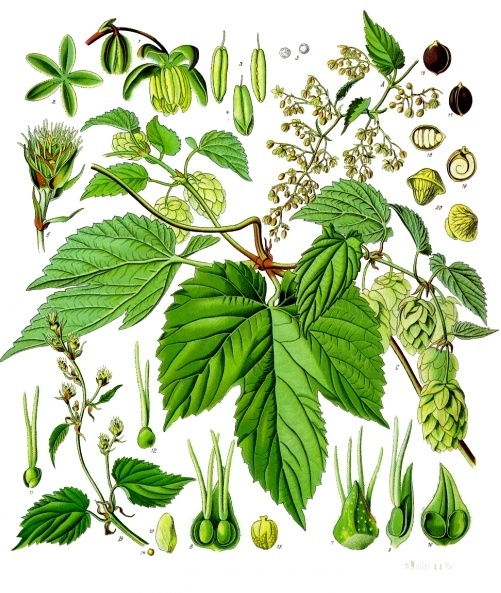
The genus Cannabis is part of the Cannabaceae, a small family of flowering plants with 10 genera and some 120 species. The Cannabaceae have been estimated to have originated ca. 70 to 90 million years ago, and are distributed in temperate and tropical regions throughout the world (Jin et al., 2020; Magallón et al., 2015). Most species of the Cannabaceae are trees or shrubs, Cannabis as a herb is, therefore, the exception rather than the rule in the family. However, a trait Cannabis shares with many other species in the family like hops is the inconspicuous unisexual flowers. Unisex flowers appear to be prevalent in the urticalean rosids, whereas bisexual flowers are by far the dominant system in angiosperms in general. The evolution of sex expression and sex determination is an interesting area of future research.
–Cannabis traits
Cannabis sativa itself is phenotypically extremely diverse.Cannabis plants vary in numerous traits including height, leaf shape, photoperiod response, tetrahydrocannabinol (THC) and cannabidiol (CBD) content, plant architecture and sex expression. The dioecy of many Cannabis lines and thus the relatively high levels of heterozygosity further contribute to the fact that even within one cultivar the phenotypic diversity can be substantial (our unpublished observations).For breeders and farmers, the high level of genetic and phenotypic diversity can be problematic, as a crop is usually best to handle when it possesses a high degree of uniformity in the field. However, at the same time, the existing diversity can be harnessed by breeders to produce new lines for a multitude of different purposes. For plant genetics research, the phenotypic and genetic diversity is a gold mine, as it provides the possibility to study the genetic basis of many traits in Cannabis.
One of the commercially most interesting and valuable products that can be generated from Cannabis plants are phytocannabinoids which are of great interest for medical applications as well as commercial exploitations for recreational use. Hence, one of the major breeding goals involves the accurate prediction and targeted manipulation of phytocannabinoid profiles to ensure the optimal combination of active components (e.g decarboxilated CBGA, THCA, CBDA) in plant extracts or legal compliance for non-psychoactive products.
Phytocannabinoids are predominantly produced in female inflorescences, more precisely they are secreted from trichomes of perigonal bracts, subtending flowers, and leaves (‘sugar leaves’) within inflorescences. However, in lower concentrations, phytocannabinoids can also be detected in vegetatieve leaves at certain times during the growth period.

–Cannabis chemotypes
The precursor molecules CBDA and THCA are both synthesized from CBGA, while CBGA is synthesized from two non-cannabinoids, olivetolic acid and geranyl pyrophosphate by a prenyltransferase. Interestingly, CBDA synthase-like genes have been found in other plants and fungi.Cannabis plants can have very high levels of phytocannabinoids or close to no phytocannabinoids at all, or anything in between. This has stipulated the description of different chemotypes that are characterized by their distinct phytocannabinoid profiles. The chemotypes are a very useful concept for chemical classifications and for breeding programmes. It should be kept in mind, however, that they do not necessarily constitute a phylogenetic classification based on evolutionary relationships. Cannabis plants can roughly be categorized into five different ‘chemotypes’:
Plants of chemotype I (short ‘type I’) produce high levels of THCA and only low levels of CBDA and CBGA. This means the ratio of THCA/CBDA is much larger than 1.
In type II Cannabis plants THCA and CBDA are both produced in approximately equal amounts. Both, type I and type II plants, are usually classified as ‘marijuana’ and can underlie strong regulations, depending on the country or jurisdiction. These plants are bred to produce up to 20 % of their dry mass as phytocannabinoids.
In contrast, type III plants have high CBDA levels and low to very low amounts of THCA.
Chemotype IV and V refer to Cannabis plants which have CBGA as their dominant phytocannabinoid or very low levels of phytocannabinoids overall, respectively.
In addition to the five different chemotypes, also the hemp-marijuana distinction is used to characterize different Cannabis plants. If the THC/THCA content in the dry flower mass is below 0.2-1 %, these plants are usually categorized as hemp, above that as marijuana (depending on the jurisdiction this threshold can vary). The differentiation between hemp and marijuana can typically also be drawn genetically, with hemp and marijuana varieties forming two genetically distinct populations (Sawler et al., 2015). Further, hemp and marijuana can be phenotypically quite distinct with marijuana plants generally being bushier and with a dense set of inflorescences while hemp plants tend to be taller, less branched and with less dense flower structures. However, there are also plants with low THC/THCA content (type III) which strongly resemble marijuana in overall plant and inflorescence architecture (Grassa et al., 2018). Hence, the terms hemp and marijuana do not necessarily always refer to distinct genetic populations or phylogenetic categories. As the critical distinction between hemp and marijuana is the THC/THCA content, they can also be considered broader categories of chemotypes.
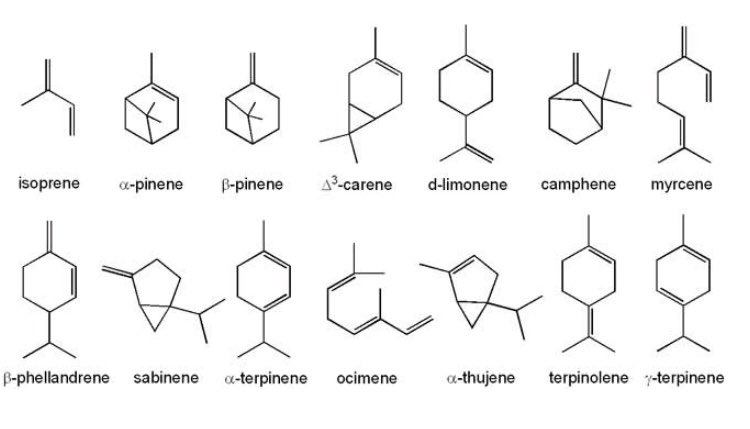
The underlying genetics of the different chemotypes have been studied in quite some detail in the last two decades. However, the complex nature of the Cannabis genome with its many transposable elements, low complexity regions and high heterozygosity have made a conclusive analysis of the loci controlling phytocannabinoid production challenging. E.g if CBDA production is increased, THCA also increases as a by-product, even if plants do not express a functional THCA synthase. Cannabis varieties with very high CBD levels may thus be at risk of exceeding legal THC thresholds. Understanding the exact genetics underlying the different chemotypes will be important for future targeted breeding approaches. Tight restrictions across the world make it difficult for farmers to grow chemotype III, IV and V varieties, because the presence of residual THC creates regulatory problems and uncertainties. Especially type III plants often have THCA/THC levels slightly above the legal THC limit. Hence, one important breeding goal is going to be the generation of zero-THC lines which still produce high levels of CBD in the range of 15 to 20 % of dry flower mass. Whether this is possible to achieve is difficult to say, since even in the absence of a THCA synthase, CBDA synthases produce THCA as a by-product. This will, therefore, require identification of a CBDA synthase that does produce only very low or no amounts of THCA. In vitro experiments show that point mutations can alter the amount of by-products (Zirpel et al., 2018). Natural variation in synthase genes exists and have been linked to altered phytocannabinoid compositions. Hence, naturally occurring or artificially generated CBDA synthase varieties could be used for targeted breeding in this direction. In addition, Cannabis varieties used for fibre or seed production could be selectively bred and genotyped to have 0 % overall phytocannabinoids (chemotype V), as currently even the farming of these kinds of varieties is heavily restricted in many countries. Other phytocannabinoids like CBG(A) and CBC(A) as well as the manifold variants of terpenes produced in Cannabisflowers are increasingly coming into focus in the medical research fields, hence generating lines with specific phytocannabinoid profiles might be of interest in further research.

–Flower development and morphology.
The flower is the reproductive structure of flowering plants (angiosperms), which represent one of the most successful and diverse groups of organisms on this planet. While the characteristic shape of the Cannabis leaf is often used as a symbol for the whole plant, Cannabis female flowers are of particular interest because they are the main site of production of pharmacologically active compounds (phytocannabinoids). Understanding the morphology of Cannabis flowers and their developmental genetics is therefore especially important.
Four different organ types have been discriminated and which are organized in concentric whorls: sepals, petals, stamens and carpels. Sepals are in the outermost whorl and usually green and leaflike in appearance. Petals are in the second whorl and often coloured to attract pollinators. Petals together with sepals are termed the perianth and constitute the non-reproductive part of a flower. Stamens are typically located in the third floral whorl. They are the male reproductive organs and are composed of an anther and a filament. The anthers grow on top of the stalk-like filaments and are the site of pollen production. Finally, carpels develop in the fourth and central whorl of a typical flower. Carpels are the reproductive organs that contain an ovary inside which ovules develop. The tip of the carpel, the stigma, receives the pollen. The style connects the stigma to the ovaria.

The commercially interesting phytocannabinoids and terpenes are predominantly produced on the perigonal bracts of female flowers, more specifically in glandular trichomes that cover those bracts. Glandular trichomes can be categorized into sessile, stalked and bulbous trichomes, with bulbous trichomes being metabolically less active. Cannabis plants also have non-glandular trichomes: hair-like uni- or multicellular trichomes which protect them from biotic and abiotic stresses. However, glandular trichomes are the main site of phytocannabinoid synthesis. It is not clear why predominantly female plants produce glandular trichomes within their inflorescence structures. Illuminating the genetic underpinnings of this sexual dimorphism remains a challenge for further research. Glandular trichomes also develop on male flowers, albeit at lower density and probably with less phytocannabinoids. Understanding which genetic factors restrict the development of glandular trichomes largely to female inflorescences during flower development would provide a valuable resource for an increase of phytocannabinoid production.
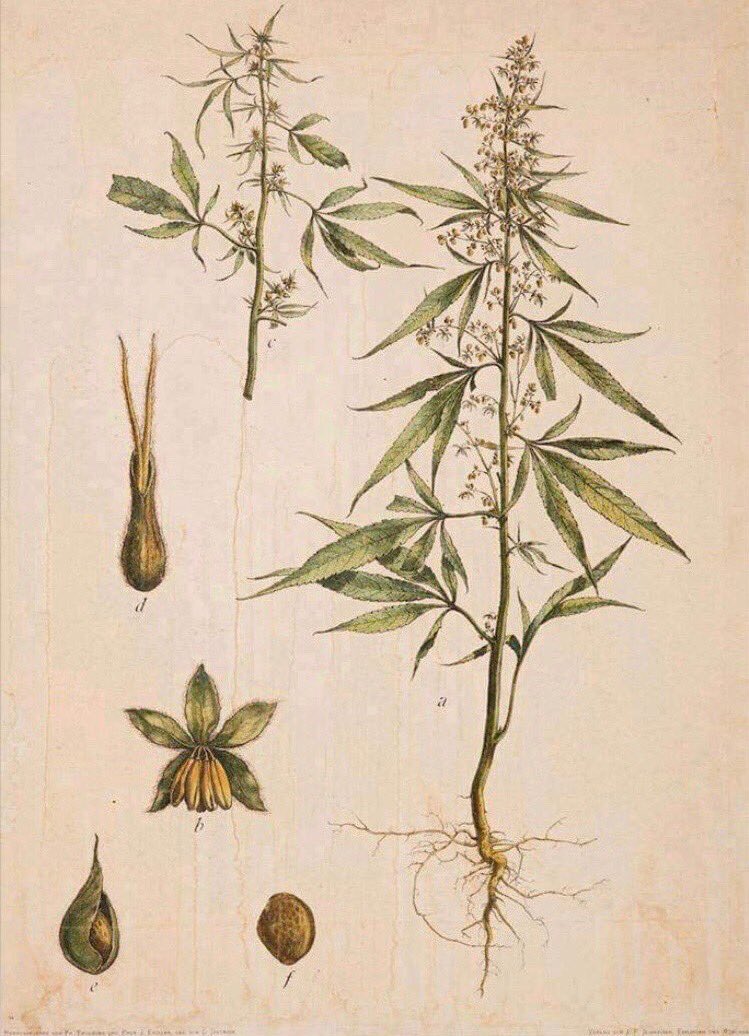
–The genetics of sex determination.
The dioecy of Cannabis is genetically controlled. Hemp is diploid, with nine pairs of autosomes and one pair of sex chromosomes. Female plants are homogametic with XX chromosomes and male plants are heterogametic with an XY sex chromosome pair. Cannabis thus represents a rare case among the flowering plants in which sex chromosomes have been identified. The diploid genome size of female Cannabis plants is estimated to be 1636 Mbp, that of a male plant 1683 Mbp by flow cytometry. The sex chromosomes of Cannabis are the largest in the chromosomal complement, they are estimated to comprise 6.5 % (Y chromosome) and 6.1 % (X chromosome) of the total length of the genome. Detailed analyses of the sex chromosomes revealed that the pseudo-autosomal region on the X chromosome (i.e. the region still recombining with the Y chromosome) is ca. 30 Mb in size, whereas the X-specific region (which is not recombining with the Y chromosome) is ca. 75 Mbp in size also identified ca. 500 sex-linked genes, i.e. alleles that are inherited in a sex-linked fashion (e.g. only from father to daughter, not from father to son for X-hemizygous alleles). It will be especially interesting to analyse the X chromosome alleles that have no Y chromosome counterpart in detail in the future, as they may contribute to sex determination.
Despite progress in identification and sequencing the sex chromosomes of Cannabis, not much is known about the molecular circuits involved in sex determination. Some confusion exists as to what the genetic ‘mode’ of sex determination is. Y chromosome specific genes inCannabis may well play a critical role in male plant development, even if not involved in bona fidesex determination.
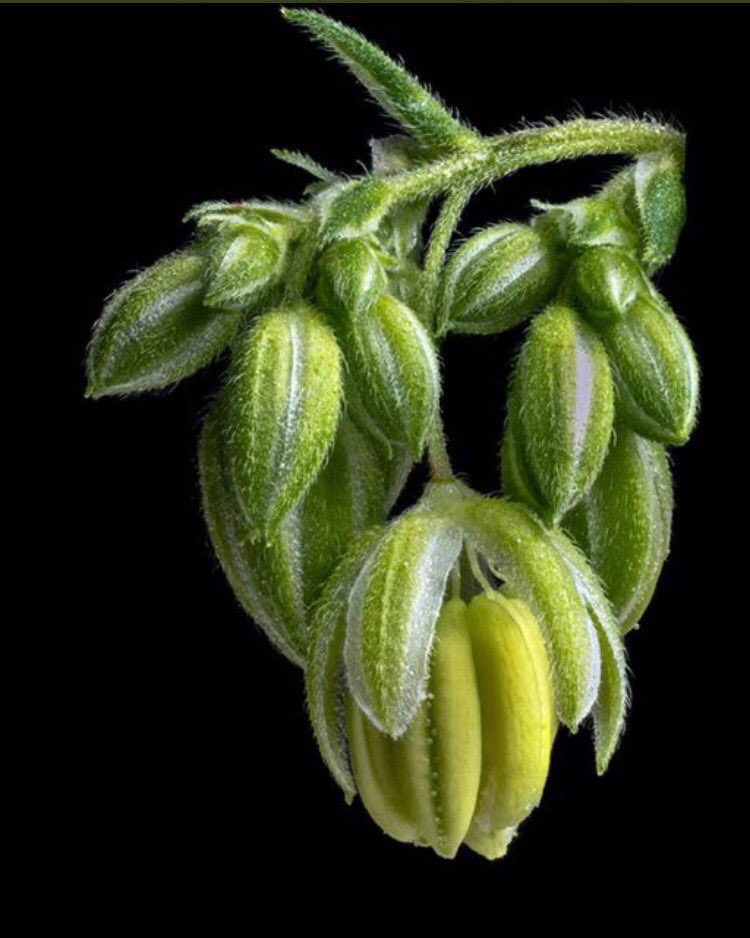
To add further complications to the study of sex determination in Cannabis, monecious varieties exist, in addition to the canonical dioecious varieties. Monoecious cultivars developmale and female flowers on the same plant and are particularly popular for fibre production. This is because in dioecious varieties, male plants flower earlier than female plants, whereas for monoecious cultivars flowering time is more synchronized, thus facilitating the determination of an optimal harvest time. Genetically, monoecious cultivars carry two X chromosomes and no Y chromosome, indicating that the XY sex determination system can be ‘leaky’ in Cannabis. In addition, the monoecious cultivars express ‘femaleness’ and ‘maleness’ to different degrees, i.e. the ratio of female to male flowers one plant develops differs between cultivars but also between different environmental conditions.
From an evolutionary point of view, the sexual system in the entire family of Cannabaceae is complex. In contrast to angiosperms in general, some 85 % of which are bisexual, true bisexual flowers are conspicuously rare in Cannabaceae (Yang et al., 2013). Several shifts of the sex determination system occurred in the Cannabaceae, and ancestral character state reconstructions indicate that monoecy, or, with a lesser likelihood, dioecy, is the ancestral state in the family.
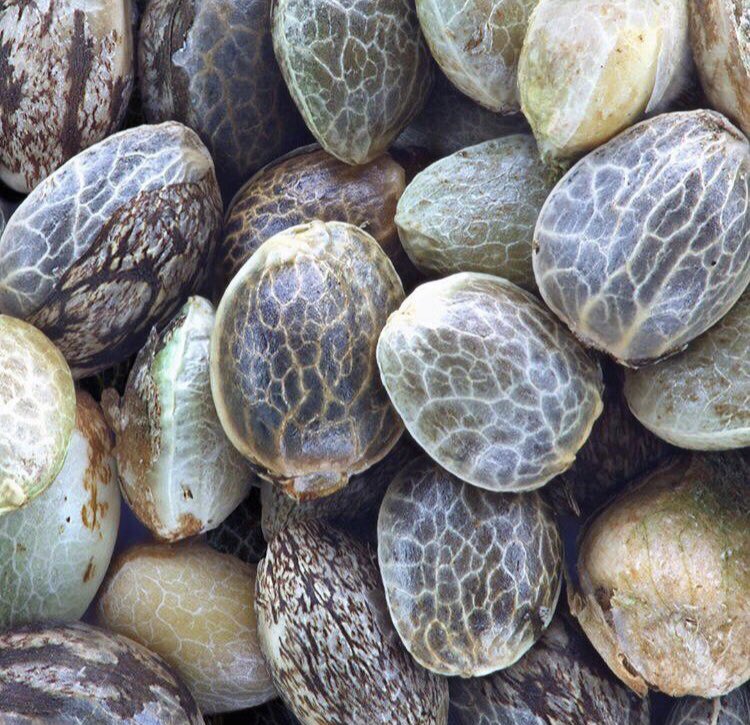
–Silver for feminizing seeds
It is well established that silver can be used to induce the formation of male flowers on female plants. This treatment is used by breeders to self female dioecious plants, which results in offspring with exclusively XX sex chromosomes (Clarke and Merlin, 2016). Because all of the progeny from such a selfed plant will be female, the ‘feminized’ seeds produced that way are usually much more valuable than conventionally produced seeds. Silver is a known ethylene inhibitor, and there is also evidence that ethylene induces the development of female flowers on male plants. Together, this therefore suggests that ethylene is involved in controlling the sex expressiion in Cannabis. In addition to ethylene, also other phytohormones have been shown to be capable of altering the sex expression in Cannabis. Auxin, for example, can lead to the development of female flowers on male plants. Cytokinin also has a feminizing effect, whereas gibberellic acid triggers the formation of male flowers on female plants (Ram and Jaiswal, 1972).
Cannabis is a short-day plant, and flowering is initiated if day length is below 14 hours, but it is well established that sex expression is also affected by day length. It was reported some 100 years ago already that dioecious plants grown under short day conditions only (i.e. without an initial period of long day growth) can develop male as well as female flowers ((Tournois 1911, 1912, as cited by (Heslop-Harrison, 1957), (Schaffner, 1923)). A lot of other environmental factors like nitrogen availability or carbon monoxide also seem to have an influence on sex expression. Together, this yields a very complex picture of different environmental factors influencing sex expression in different directions that is far from being completely understood. Creating male sterility would be very beneficial, as phytocannabinoid production is highest in unpollinated female plants. Studying both sex chromosomes, their gene content as well as the molecular intricacies of the sex determination mechanisms will certainly provide valuable insights for breeders as well as researchers.

–Flowering time control
Flowering time control is essential for reproductive success. Mechanisms to control the time of flowering have evolved given the negative consequences of spontaneous floral initiation: Premature flowering could coincide with the absence of pollinators or dispersers, subsequently causing reduced fertilisation rates and deficient seed dispersal. Conversely, if flowering occurs too late the plant may fail to set seed before harsh conditions hit at the end of the growing season (Gaudinier and Blackman, 2020). Moreover, in dioecious species such as Cannabis, the timing of flower emergence is particularly crucial, because if male and female plants do not flower concurrently, pollination cannot occur. Hence it is evolutionarily beneficial for plants to possess mechanisms to fine-tune their flora initiation.
As a quantitative short-day plant, Cannabis flowering time is particularly determined by the photoperiod. Under long-days Cannabis remains vegetative and flowering is only induced when a number of short-day photoperiods have passed. Therefore, in order to cultivate Cannabis at new lines of latitude (for example in Ireland where summer daylengths can be over 17 hours), the adjustment of flowering time genes can be advantageous. Consequently, comprehensive characterisation of the Cannabis flowering time pathways is crucial to the integration of this crop species into modern agriculture. The reasons for this are evident when the flowers or seeds are the main agricultural product, such as hemp oil from seeds or CBD production from flowers. But flowering time also determines the crop purpose in more general terms, with later flowering varieties favouring vegetative stem growth thus suiting fibre production and earlier varieties displaying enhanced flower/seed yield. The interactions between flowering time and fibre quality are complex (reviewed in Salentijn et al., 2019) and the developmental stage at harvest has major implications for fibre quality. Additionally, a better understanding of flowering time is important to generate varieties that are adapted to local climatic and photoperiod conditions.
A related question is how many consecutive short days are required to induce flowering. Borthwick and Scully (1954) reported two weeks of a short photoperiod induced flowering in 3-5-week-old plants, and the greater the plant age at the time of switching to short-day the faster the floral transition. Furthermore, Potter (2014) stated flowers can be visible one week after the reduction in day length. Clearly, more research is needed in this area, in particular to explore the variation between cultivars for this trait.
Given that most individuals eventually flower under non-inductive photoperiodic conditions, a more detailed analysis of the age-related and the autonomous pathway and their influence on flowering time is warranted. In addition, it would be especially interesting to observe stressors that can accelerate flowering under non-inductive photoperiodic conditions, and detect whether the same signalling pathways are at play when individuals eventually flower under long days.
–Autoflowers
Huge diversity exists for flowering time in Cannabis with phenotypes generally categorised as early-, mid- or late-flowering. Furthermore, photoperiod-insensitive (also known as day-neutral or auto-flowering) cultivars exist. A recent study suggests that female floral initiation occurs independently of the photoperiod in some Cannabis cultivars, while in others shorter photoperiods were required for flower maturation and development. Further research is required to substantiate the molecular basis of those observations, and research on model plants may serve as an important primer to understand the gene regulatory network controlling flowering time in Cannabis.
Gene mapping comparison with other crops like soayabeans – approaches (genome-wide association studies, quantitative trait loci mapping) and functional analyses are still required to elucidate the flowering time network in Cannabis. Furthermore, as a wind-pollinated, dioecious species Cannabisis primarily outcrossing (Salentijn et al., 2015). In self-pollinating species such as rice, Sorghumand Arabidopsis, variation in flowering time is controlled by a few large-effect loci (Gage et al., 2020). It remains to be seen how complex traits will be determined in Cannabis, but taking inspiration from the successful elucidation of complex traits in maize may motivate the formation of sophisticated multi-parental mapping populations such as Nested Association Mapping (NAM) or Multiparent Advanced Generation InterCross (MAGIC) populations (Gage et al., 2020).
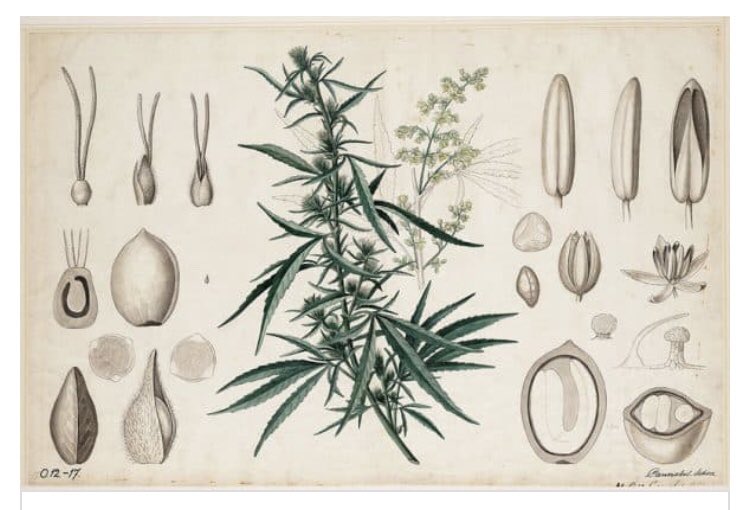
–Cannabis genome
Cannabis is dioecious and has not been subject to intense breeding (Lynch et al., 2016; Sawler et al., 2015). While this genetic diversity is desirable for selective breeding, it can complicate genome assembly. While the first drift Cannabis genome, from the marijuana Purple Kush (PK) cultivar, was sequenced in 2011, the short-read sequencing of that time could not resolve repeat-rich, low complexity regions (van Bakel et al., 2011). This led to a very valuable yet incomplete genome assembly, consisting of 534 Mb (van Bakel et al., 2011).
Long-read sequencing greatly facilitates the assembly process and has been revolutionary for plant genomics, enabling chromosome-level assemblies to be achieved (Jiao and Schneeberger, 2017; Michael and VanBuren, 2020). Recently, long-read sequencing, in parallel with genetic and physical mapping, has enabled four chromosome-level assemblies from the CBDRx, PK, Finola (FN), and a wild Cannabis (CR) line (Gao et al., 2020; Grassa et al., 2018; Laverty et al., 2019).
Genome sequences will be an invaluable resource for characterising the genetic basis behind the wide phenotypic diversity observation within Cannabis. Specifically, they will facilitate the development of a Cannabis pan-genome, where gene sets unique to specific cultivars could be defined. Such cultivar-specific genes are often representative of niche phenotypic adaptations that have evolved in response to specific environmental conditions. Cultivar-specific genes could be key targets for breeding, where new cultivars could be designed with desirable traits for specific production purposes (Tao et al., 2019).
Furthermore, genotyping by sequencing (GBS), amplicon sequencing, bisulfite sequencing and Hi-C data are available for a multitude of different hemp as well as marijuana varieties. GBS is an efficient and cost-effective method to genotype a large number of samples, providing insight into the population structure and genetic diversity within a species (He et al., 2014). There have been at least three population-based studies that have generated GBS data for ~400 samples, representing both hemp and marijuana lines. These studies find that hemp and marijuana often form distinct populations, not segregating based only on the BTand BDloci, but on a genotype-wide level. Given that economically important traits like sex expression and flowering time are under strong environmental control, it will be interesting to explore to which extent those traits are epigenetically regulated. This may open the possibility of breeding ‘climate smart’ Cannabis plants, similarly to other crops where epigenetically regulated heat, drought or cold adaption are explored for crop improvement (Varotto et al., 2020)
One Hi-C dataset exists for the Jamaican Lion JL cultivar and is available on NCBI (Gao et al., 2020). Additional Hi-C datasets are available for the Jamaican Lion genomes through the Medicinal Genomics website (https://www.medicinalgenomics.com/jamaican-lion-data-release/). The 3D organization of the genome and its implications for gene regulation are currently being heavily investigated in plants (Santos et al., 2020). The available Cannabis Hi-C data are both useful for facilitating genome assembly as well as for understanding epigenetic regulation of gene expression (Xie et al., 2015). Furthermore, two recent studies have focused on identifying the sex chromosomes based on characterising the expression of sex-linked genes in male and female plants (McKernan et al., 2020; Prentout et al., 2020). The transcriptomes of the PK and FN cultivars sequenced in 2011 are also available (van Bakel et al., 2011).

–Cannabis engineering
Cannabis sativa is a versatile multi-purpose crop which requires a simple, low-input cultivation technique, adapts to various ecological conditions, produces sustainable products, and provides raw material for a wide range of applications, including food and medicine. Research into the synergistic pharmacological effects of Cannabis metabolites suggests that ratios of phytocannabinoids, terpenoids and other Cannabis metabolites influence a plant’s therapeutic potential. Research is needed to determine the influence of environmental and genetic factors on the phytochemical profile of the Cannabis plant.
The therapeutic effects of a given plant reflects the proportions of the various pharmacologically active components. The development ofCannabis chemotypes containing high levels of specific phytocannabinoids can be achieved through breeding. De Meijer et al. produced Cannabis chemotypes high in specific single phytocannabinoids, including THC, CBD, CBG and CBC. Cannabinoid-free chemotypes were also developed, which could aid investigation into the contributions of non-cannabinoid bio-actives, such as terpenoids, to the pharmacological effects of Cannabis (de Meijer et al., 2009b; Russo, 2011). The development of these chemotypes through conventional breeding demonstrates the high diversity of the Cannabis genome, which may obviate the need for genetic engineering of Cannabis (Russo, 2019). Phytocannabinoid and terpene levels are affected by factors such as the humidity, rainfall and temperature of the growth environment. However, the relative ratios of the different Cannabis metabolites are dependent on the genotype. Identifying the environmental and genetic factors that influence phytochemical production by Cannabis could aid in the development of new Cannabis cultivars with tailored ratios of various metabolites.
–Hemp for houses
The high tensile strength of hemp fibres, traditionally exploited in rope and fabric applications, also enables mechanical advantages for building construction applications. Additionally, shiv particles of the woody-core are a biobased alternative to mineral aggregates for low-impact concrete. Therefore both the plant fibres and the shiv particles are suitable for developing biobased, environmentally friendly building materials that have been shown to have inherent thermal, hygrothermal and acoustic characteristics.
Building products that integrate hemp are many, but reductively may be grouped into two general categories, hemp concrete and hemp insulation blankets: Hemp concrete are those mixed with a binder to form a porous concrete composite with thermal insulation qualities. Hemp insulation blankets are thermo-formed without an added binder to create a low density, blanket type product.
Hemp, and biobased materials more generally, remain niche products. Today hemp insulation products are almost twice the price of the mass produced alternatives (Carus et al., 2013), even though plant fibres have a lower cost of processing than synthetic fibres. However, the building sector, and its considerable environmental impact, is increasingly in focus, and the environmental benefits of biobased materials are giving them greater traction. Hemp, with its fast-growth cycle and multi-purpose advantages is increasingly proposed as a low-impact design solution.
Besides storing carbon in building materials, alternative uses for this crop exist, and as such, there is a high potential for carbon to be stored both short- and long-term in bioenergy, textiles, and paper. Further contributing to the environmental connotations of this species, hemp has been employed in phytoremediation efforts to restore land implicated by heavy metal contaminants. Hemp leaves and seeds also provide the basis for human consumption.

–Hemp as medicine for the environment
Hemp biomass has good combustion properties and could be used to generate either heat or electricity. There are multiple biofuel options: Biogas, solid fuel briquettes, bales, and bioethanol. As hemp is an annual crop it can be readily integrated into crop rotation cycles, thus not competing with food supplies and can therefore contribute towards sustainable cropping systems. Moreover, hemp has been reported to improve yields of crops subsequently grown thus complementing food production. Winter wheat planted after hemp had 10–20% yield increases (Bócsa and Karus, 1998), with similar observations recorded for soybean and alfalfa (Adesina et al., 2020).
Hemp offers the combined potential of an effective break crop and an efficient energy crop, thus generating income while promoting productivity. Break crops like hemp can be used to disrupt pest cycles and the ability of hemp to tolerate high planting densities suppresses weed growth, thus pesticide and herbicide requirements of subsequently, cultivated crops are reduced. The hemp root system promotes soil health, as the large taproots penetrate deep into the soil facilitating aeration, but simultaneously forms soil aggregates to prevent soil erosion. Thus hemp may fulfil a future niche as a sustainable bioenergy crop that can be cultivated over a wide range of climatic and agronomic conditions.
The evolution and genetic diversity of phytocannabinoid synthases has proven to be a complex field of research, as is the genetic and environmental control of sex determination and flowering time. The increasing availability of genomic resources will undoubtedly facilitate progress in all those areas, but it is predicted that experimental analyses, including detailed morphological, molecular genetics and phenotyping studies will be equally important to understand the developmental and physiological intricacies ofCannabis. Unusual in that it is a multipurpose crop, the full sustainability potential of Cannabis can only be fulfilled if it is used as such. Thus, one major challenge will be to design crop ideotypes that harmonise traits of medicinal relevance with those important for carbon sequestration. This will not be an easy task, as the genetic control of different traits is currently unclear. However, the production of e.g. large fibre varieties that do nevertheless develop a dense inflorescence with high CBD content seems not too farfetched. Even if those hypothetical cultivars may not be able to provide the high yields of specialized CBD cultivars they may provide farmers focusing on fibre production with a second source of income.
In summary, the genetic and morphological diversity of Cannabis is a treasure trove that is only recently started to be explored. It is important to capitalise on this treasure to construct a multipurpose swiss knife, and not a series of highly specialised tools.

